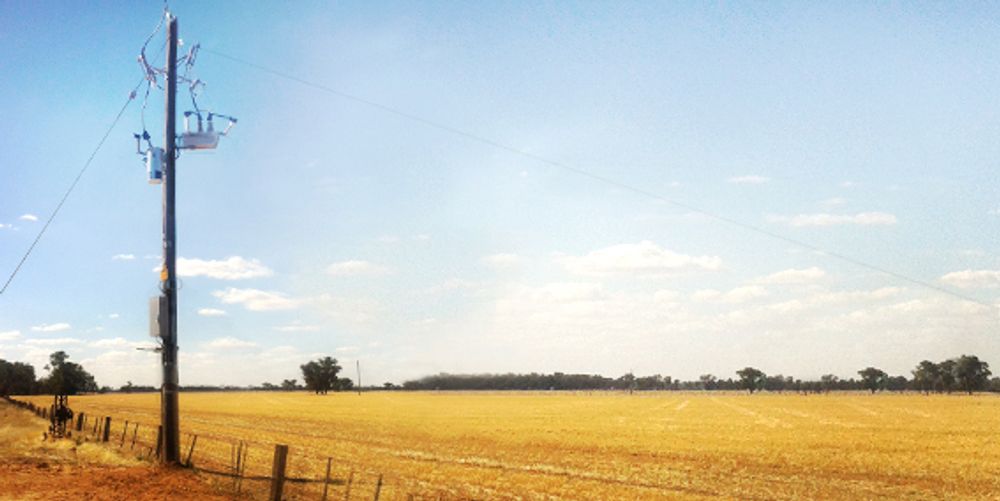Press Release
Published 07/2015
NOJA Power collaborates with Australian utility to pioneer detection of fallen HV conductors using under voltage brownout functionality in its Automatic Circuit Reclosers
Enhanced protection capability helps improve distribution network safety.

Electrical switchgear engineers NOJA Power today announces successful collaboration with a major Australian utility to pioneer detection of fallen high voltage (HV) conductors using under voltage brownout capability in its OSM Series Automatic Circuit Reclosers (“auto-recloser” or ACR). The result of the collaboration is the inclusion of a fourth type of under voltage fault detection functionality in Relay firmware 1.10 and later versions of NOJA Power’s ACR firmware. The new functionality helps to improve distribution network safety.
Brownouts are under voltage events that occur when one conductor of a three-phase distribution system is disconnected. Under such circumstances the voltage of one or two phases falls below normal supply value while the voltage of the third phase remains unaffected. (Blackouts occur when the entire system is disrupted.)
Brownouts take place because of the operation of a single HV fuse or a burned-out HV bridge due to a high fault current. In addition, a more hazardous brownout scenario can arise when, for example, during bad weather, a dislodged tree branch breaks an HV conductor and the ends of the conductor fall to the ground. A phase-earth fault current can then burn away the supply-side conductor, leaving the load-side conductor still in contact with the ground. A dangerous situation can occur when an upstream ACR trips and then recloses but the resulting fault current is insufficient to cause another trip – resulting in the conductor on the ground remaining energised. Energised conductors are hazardous to people and animals and can cause vegetation to catch fire.
A major Australian electricity distribution utility wanted to eliminate this danger so it requested that NOJA Power included functionality in its ACR firmware to use voltage analysis to determine the cause of a brownout. The utility wanted to use this functionality to implement a protection scheme that locked out the ACR upon detection of a fallen HV conductor.
The utility analysed the voltage “signature” resulting from fallen HV conductors and found that a key feature of this signature was due to the fallen conductor introducing a ground return path on the load side of the fault resulting in an increase in earth current. NOJA Power then enhanced the functionality of its ACR so that the utility could implement a protection scheme that upon detecting this increase in earth current, combined with an under voltage brownout (defined as a voltage between the high load voltage sag level (17.6 kV for a 22 kV system) and noise threshold (1 kV), de-energised the feeder, making any fallen conductor safe.
The new functionality, called “UV4”, adds to the three forms of under voltage protection already included in the firmware for NOJA Power’s OSM Series of ACRs. “UV1” detects three-phase under voltage, “UV2” detects phase-to-phase under voltage and “UV3” detects loss of supply (a blackout).
The new functionality was introduced with the release of Relay firmware 1.10 and is included in later versions. Utilities employing NOJA Power’s OSM series ACRs with RC-10 control cubicles require no hardware additions to take advantage of UV4.
“Close collaboration with a key Australian customer has enabled us to develop new functionality which could help to significantly improve distribution network safety across the globe,” says Neil O’Sullivan, NOJA Power’s Managing Director. “Such collaboration demonstrates NOJA Power’s willingness to consider customer requests and work with them to enhance the quality of our products. "
“While this customer is proud to be the first company in the world to implement a protection scheme using this new functionality in NOJA Power’s auto-reclosers, I predict it will be followed by many others, particularly in regions where bush fires are a major hazard,” adds O’Sullivan.
NOJA Power’s OSM series ACRs are fundamental elements of smart grids and provide a comprehensive suite of automation features. The units perform voltage measurement on all six bushings, current measurement on all three phases, bidirectional protection and extensive power quality and data logging capability.
The ACRs benefit from the use of vacuum interrupters and solid dielectric insulation instead of the environmentally unfriendly oil or sulphur hexafluoride (SF6) gas used in sectionalizers and older recloser products. Another key feature of the OSM series is its stainless steel enclosure that forms the only solid dielectric unit with controlled internal arc fault venting on the market.
The RC-10 cubicle is a SCADA-ready controller that provides a directional overcurrent, earth fault and sensitive earth fault relay, auto reclosing relay, instantaneous metering, event log, demand logger and remote terminal unit (RTU) for remote control in a single package.
Want to stay up to date with Electrical Distribution Technology?
Join our list for a free weekly technical bulletin, as we share our Global Electrical Engineering experience directly to your inbox.
Subscribe →